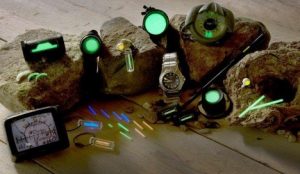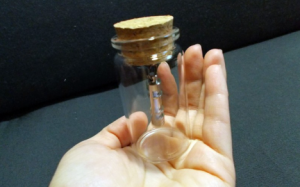
Tritium is a radioactive isotope of hydrogen, but it is also found in your drinking water, can be purchased without restrictions, and is even inside you right now. If you've never heard of it before, it's similar to the green stuff Homer plays with in the Simpsons intro and can glow for up to 25 years.
A little history
Tritium was first discovered by Mark Oliphant, Ernest Rutherford and Paul Harteck in 1934. It is a radioactive isotope of hydrogen, which is mainly used in research activities, neutron generators and fusion reactors.
From a chemical point of view, the definition is as follows: tritium is an isotope of hydrogen with 3 neutrons, deuterium has 2 neutrons, and hydrogen has only one. When mixed with a phosphor, a continuous glow is achieved.
When exposed to tritium, different phosphors emit different colors of light, so different combinations can be easily created.
As a form of hydrogen, it is naturally found in air, water, and you probably have some of it in your body right now.
How is tritium obtained?
Naturally, when cosmic rays interact with nitrogen or deuterium in the upper atmosphere, tritium and carbon are formed. Tritium then falls to the ground as rain, giving us a natural form of the radioactive chemical.
Artificially - tritium is produced by breaking hydrogen with neutrons in an accelerator or nuclear reactor.
Application

It is widely used in self-igniting luminous objects that “glow forever.” For example, watches from top manufacturers contain tritium hands and watch dials.
Small quantities are used in self-igniting lighting devices known as beta lamps. Beta light is used in many devices such as night sights for firearms, mapping lights, exit signs, watches, knives and medical diagnostics. Providing up to 25 years of glow, they never need recharging or electricity, they just glow.
Warfare
The main function of tritium is to increase the power of both fission and thermonuclear weapons. It is also used to improve the efficiency of fission bombs as well as fission stages in a process known as “boosting.”
Moving from fission to fusion, the two key ingredients of the H-bomb are tritium and deuterium, when they react together nuclear fusion occurs. This is the basis of the powerful H-bomb.
Health and Safety
Although it is radioactive and a key ingredient in destruction, the risks associated with regular exposure are low for the following reasons:
- It is a low-energy beta emitter, so it does not emit much energy. Chemically, it behaves in the human body like water - it forms T2O or HTO.
- It has a short half-life of 12 years and passes through the body like water.
Colored phosphors
This is not a call to go crazy and wallow in this stuff, like most things, large doses can cause significant harm. If it gets into the lungs, it is eliminated from the body very quickly, literally in three minutes. An aqueous solution of tritium is much more dangerous for the body. Keychains, which contain a minimal amount of the substance, are not at all dangerous to people.


 0
0





